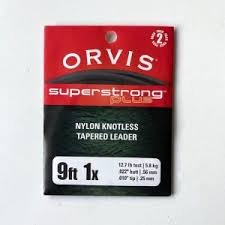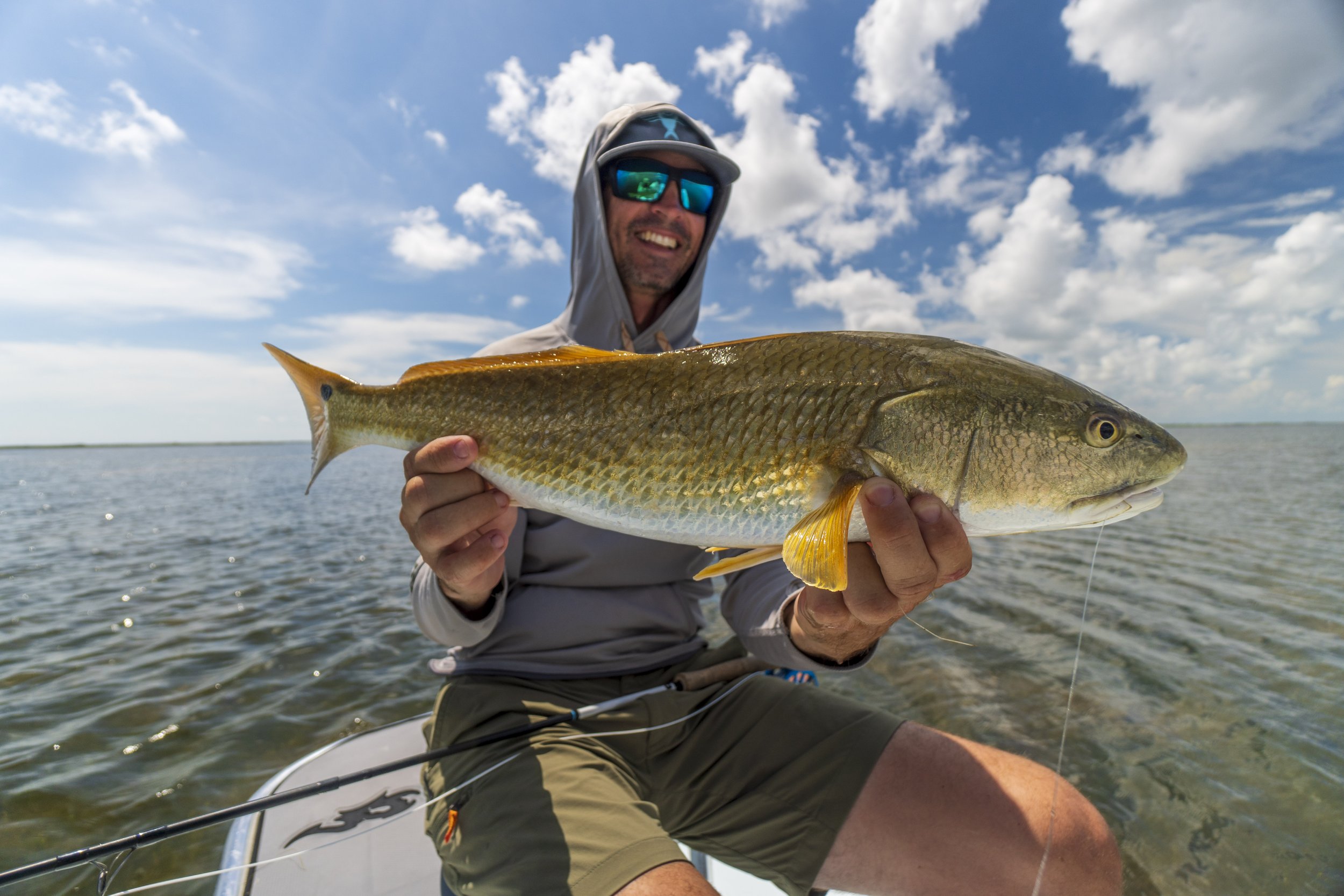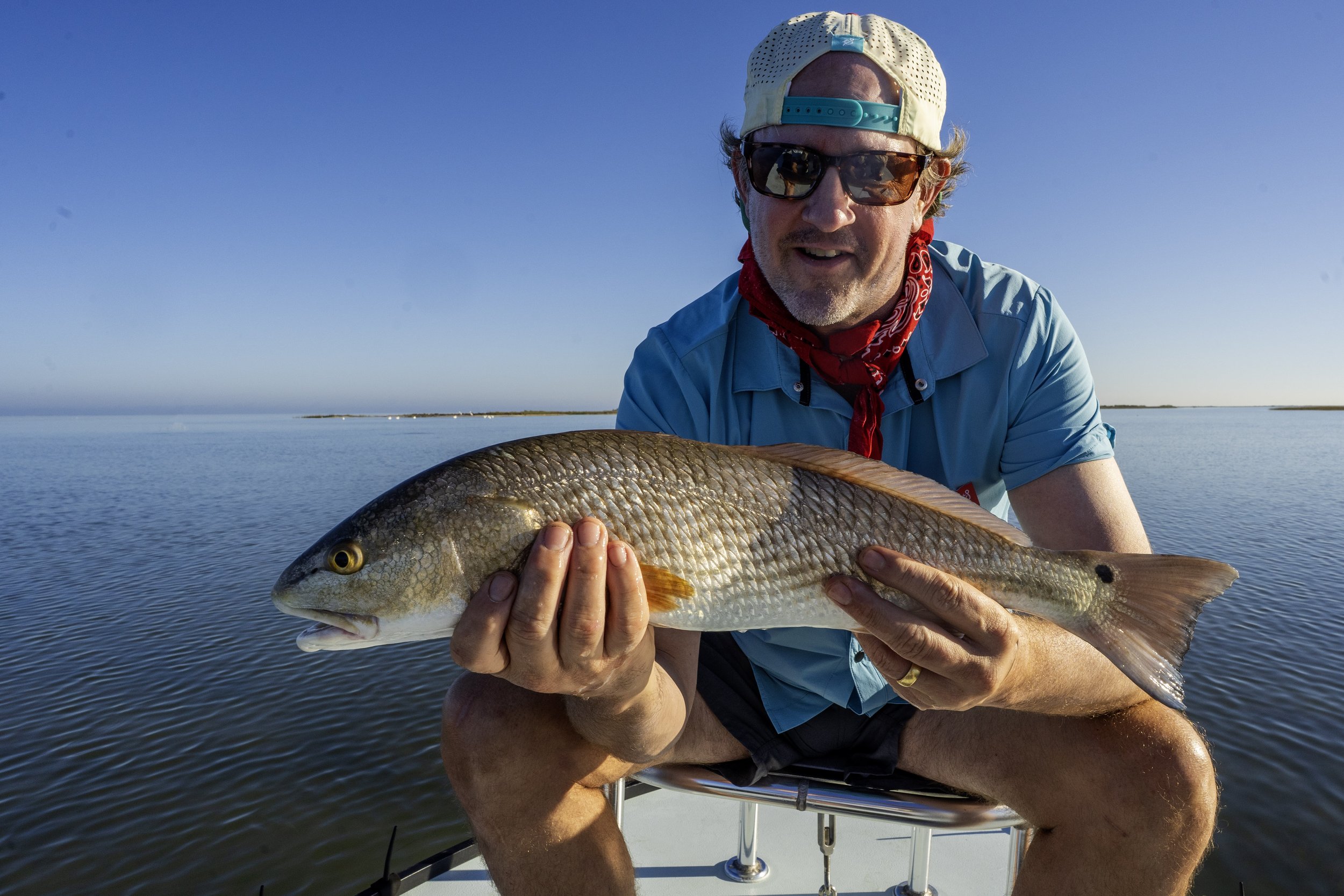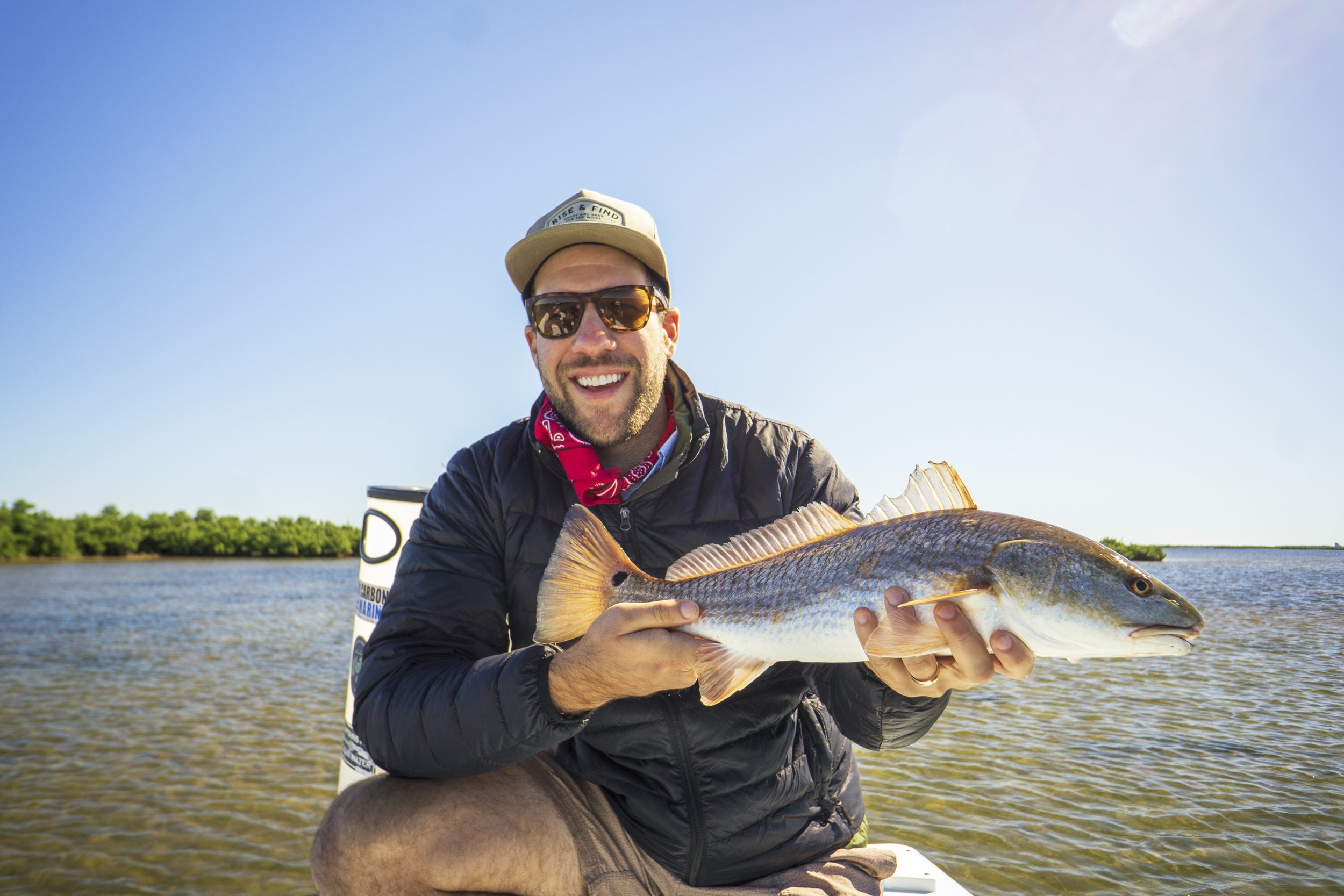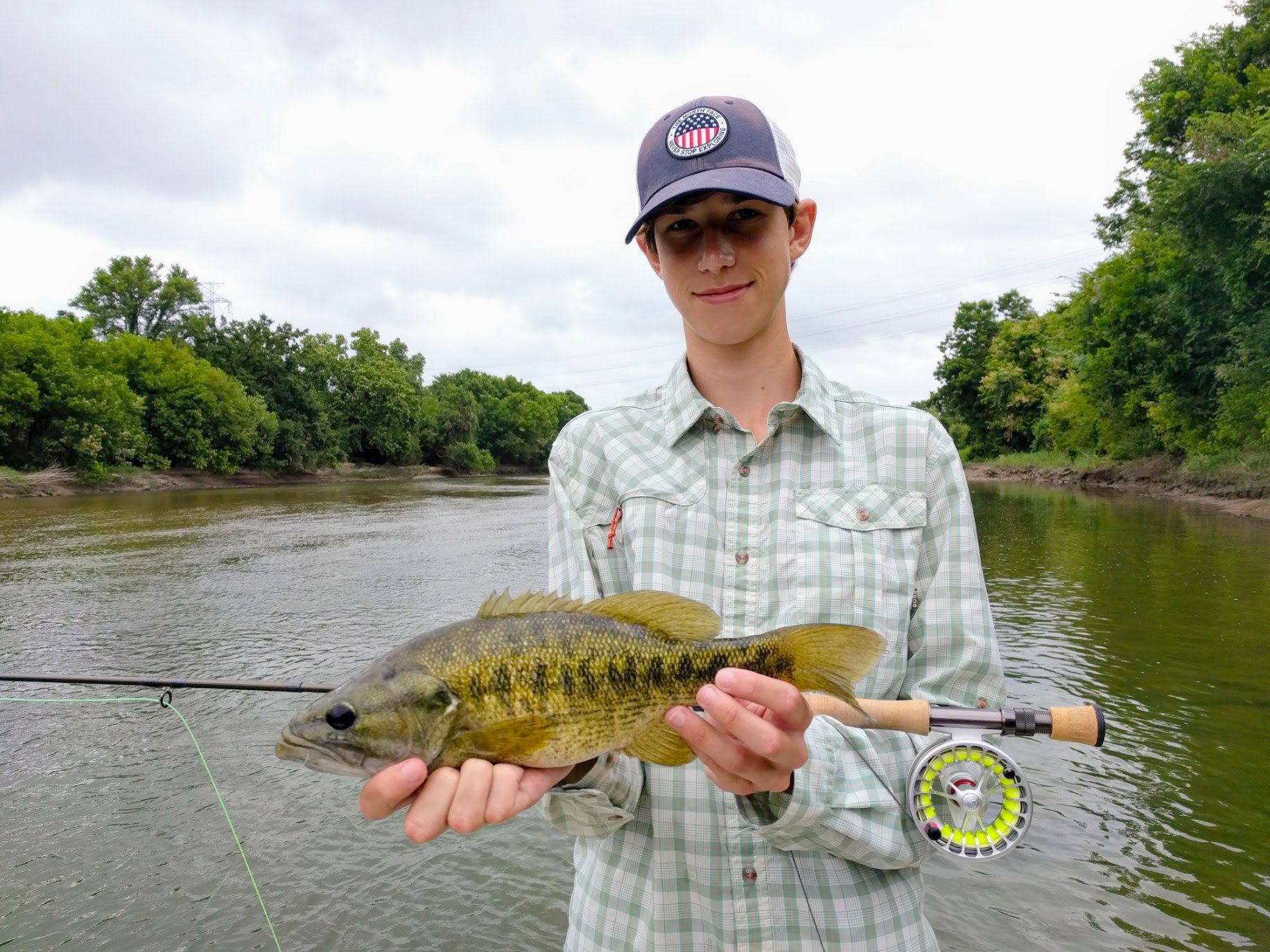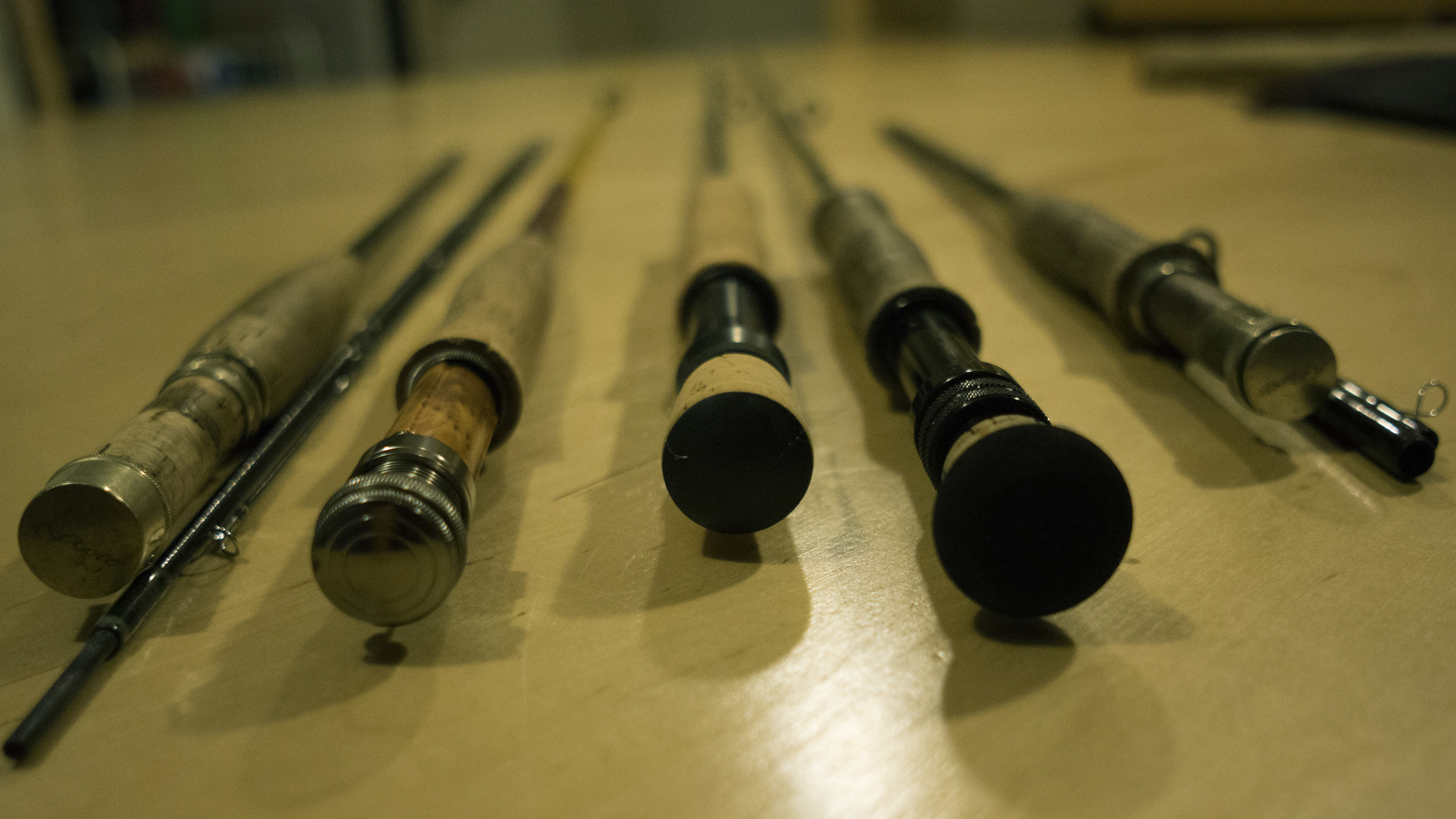Everything To Know About Leaders
Everything To Know About Leaders
Introduction to leaders: To make it really simple leaders are the monofilament attached to the end of a fly line, used for attaching flies.
Functions of leaders: There are many. They facilitate fly attachment, provide stealth by reducing splashing noise, and control energy transfer for gentle fly landings or turnover of bigger flies.
Types of leaders: Pre-tapered leaders come pre-packaged with loop-to-loop connections, while hand-tied leaders offer customization but require knot tying.
Components of leaders: They consist of a butt section (thickest), a tapered section, and a tippet (thinnest and replaceable part).
Specialty leaders: Include sinking line leaders for deep fishing, shock tippets for larger fish, and bite tippets for fish with sharp teeth.
Today, I'm going to tell you everything I know about leaders, Initially I was going to title the video everything you need to know about leaders, but I realized, I don't know everything there is to know about leaders, so I'm just going to tell you everything I know about leaders.
So what is a leader? I'm not talking about a president, a dictator, or a prime minister. I'm talking about the piece of monofilament that you attach to the end of your fly line that you tie your fly to. The piece of monofilament may be a single piece of monofilament, maybe multiple pieces of monofilament, maybe a thick piece, maybe a thin piece. We're going to get into all that.
So what does a leader do? Quite a few things, actually. Most people just think of it as a way to attach the fly to the end of your fly line. So the fly line is pretty thick. You can't really get the fly line through the eye of a hook and you need a leader to taper it down, so that is one thing a leader does that. The leader also provides some stealth. Obviously, the big thick fly line splashing down is much more likely to spook the fish than the thin monofilament. There's a couple of things that the leader can do or not do, depending on what type of fishing you're doing. So if you're doing something where you need a stealthy approach, you know trout, fishing fishing spooky fish on the flats, you need a fly to land nice and soft. Well, a leader's going to help you do that.
So what's happening as your fly line is rolling out. There's a little pocket of energy that's stored in the fly line, lots of physics we could go into, but I think that's a topic for another post. But basically, what's happening is that fly line is speeding up as it's moving away from you. And if you didn't have a leader on the end or if you had a short stout leader on the end fly line tends to kick and slap you fly down into the water. So think about it this way. The loop is like a baseball moving along at a certain velocity, actually speeding up, which is one of the crazy physics things about how the fly cast works. And then all of a sudden that baseball just smashes into the water. So that's what happens when you don't have a leader or if you have a short, stout leader. But imagine the baseball suddenly turned into a ping pong ball, which is what happens when that loop in the fly line hits that thinner diameter monofilament. So the longer and the thinner that leader is, the more of that energy gets spilled off as that loop hits the leader, so the more likely you fly is to land nice and gently.
Now the flip side of that is if you've got a big, bulky fly that is kind of pushing the limits of what your fly line can deliver. If you put a shorter and heavier leader on, it's going to transfer more of that energy and be more likely to turn that fly over. You know, it's going to land with a splash, but it's a big, bulky fly that is going to hit land with a splash, no matter what you do, but you just want to get that fly to turn over. So that's sort of the basic physics of the long, thin leader versus the short, heavy leader.
So short, heavy leaders turnover bigger flys transfer, more energy, and are more likely to make a splash. Long light leaders are going to spill more energy. The fly is going to land much more gently and with much more stealth. So that's two of the things kind of opposing things that your leader can do for you.
OK, so types of leaders, I just kind of lump them in two broad categories. One is a pre tapered leader that you buy that comes in a package. And then the other is a hand tied leader. So you've got multiple different diameters of material leader material that you tie together to make your own tapered leaders. They both have their pros and cons.
Obviously, the pre tapered leader is the easiest. You just take it out of the package, attach it to your fly line, put your fly on the other end and boom you're fishing. And most of your pre tapered leaders are going to have a loop. Most of your modern fly lines are going to have a loop, so you can make a loop to loop connection. Putting the fly on couldn't be any easier, right? OK, so there are some disadvantages, though, to the pre tapered leader. So you need a really specific leader for a specific type of fishing, and you may not be able to find a pre tapered one The tapered leaders are going to be more expensive.
If you buy a bunch of spools a tippet material and tie your own leaders, you can definitely save some money. And there's a lot more options if you're tying your own. You can make the taper however you want. You can put whatever size of tippet on. Whatever butt section you want, you can make whatever you want. Now the hand tied leaders have some cons as well. You know, one is the fact you have to spend the time learning, knots to put them together, and they're never going to be quite as smooth as a pre tapered leader. The other thing is, there's knots so knots may snag, knots may pick up weeds, that type of stuff. So there's pros and cons to both.
I use both. I use pre tapered leaders. I make hand tied leaders just depends what I'm doing. Personal preference is probably the most important factor when deciding what to do with your leaders.
OK, so the parts of your leader. I break them down in three basic parts. You have the butt section, you have the tapered section, and you have your tippett and this will be on hand tied leader or pre-tapered leader. Usually the butt section, that's the thickest part is going to be close to the diameter of your fly line. The Butt section is going to help transfer energy.
Then the taper section is exactly that. It goes from that thicker butt section down to a smaller diameter. There's all kinds of different formulas for tapers, both on pre tied leaders and hand tied leaders, and they have to do with how the energy is transferred. You know, you want a quick turnover, you want a slower turnover or a more stealthy turnover. It's almost as complicated as fly lines are. A lot of thought goes into it. Usually you grab one, you tie it on. It works, or it doesn't work. If you do your own tied leaders, it's something to think about. You know how quickly you go from that, butt section to the tippet section?
Now the tippet section is the end of the leader. So it's the part that is the minimum diameter for that leader. And it could be anywhere from one or two feet to six or eight feet, just depending on the application. The tippet is also the reusable part of the leader. It's one diameter, so you buy your tippet material and then you can rebuild that leader after you've changed flies a few times. Or if you want to, you can modify the leader. So if you have a 3x leader and you want to throw some small flies. You can put 3x, 4x or 5x tippet on that leader still get a pretty good knot, and still get a pretty good transition. And then your leader becomes much more versatile because you can change the tippet to suite the conditions and the leaders will last a lot longer. That is another one of the cons of the pre tapered leaders. They're going to be more expensive, so you want to have that tippet material so that you can rebuild those leaders while you're on the water and you're not going through a bunch of leaders every day.
Let's talk a little bit about specialty leaders. So leaders for sinking lines, leaders that have shock tippets, and leaders that have bite tippets. So for sinking lines, we typically use a much shorter leader. Having a longer leader sort of defeats the purpose of having a sinking line or sinking tip line. The line wants to sink because it's weighted, but the leader doesn't have any weight. So if you have a long leader is going to tend to kind of float up toward the surface or belly up toward the surface. Now that could be a bonus. You may have a situation where you want to suspend your fly above the bottom are above where that fly line is sinking, but typically you want to get your flies down. That's why you're using a sinking line, so a short, heavy leader is going to work better. Most of the time for sinking lines I tie my own leaders because not too many companies are selling three Foot Ox leaders, and that's basically what we use. A lot of the time even heavier. I do like to taper them with a butt section and a tippet. You can just go with a single piece of heavy mono for your sinking tip leaders.
Next up is leaders with bite tippets and shock tippets. A leader with a bite tippet will have a piece of wire somewhere between six inches, eight inches, maybe even a foot at the end. If you're fishing for some fish that has a lot of teeth, you like Barracuda, or Dorado, the wire will keep the fish from cutting you off when they grab the fly.
Shock tippets are usually some really heavy mono to prevent breakage due to abrasion. If a fish has a rough mouth or gill plates, think tarpon or snook. You don’t have to use wire because these fish don't have teeth, but you do want to avoid abrasion from rough gill plates. For these leaders you'll put 40, 60, 80 even 100 pound shock tippet on the end of your leader. You will still have the tippet, you know, the ten, 15, 20 pound tippet. But then on the end of the leader, you'll have that heavy mano to prevent abrasion.
OK, so we just kind of scratched the surface of the world of leaders with this post. You can get really deep into it like a lot of other aspects of fly fishing, and you can make it as simple or as complicated as you want. I kind of like to stay in that middle zone. You know, there are times when you do need to get some specific leaders, but a lot of times you'll be surprised at how far you can get with a couple of really basic leaders. I use the same leaders for Redfish that I use for bass. So there is no need to make this any harder than it absolutely has to be.
The Best Way To Buy Fly Fishing Gear
Go for the Ready-to-Go Set: Think about grabbing one of those ready-made kits from names like Orvis, Sage, or Redington, starting around $150. They're like all-in-one packages, making life easier and ensuring good quality.
Stick with the Pros: It's smarter to stick with the big names in fly fishing gear like Orvis or Sage rather than rolling the dice with a big box store. You'll thank yourself later for the better service and repairs.
All About the Rod for Freshwater: If you're hitting the freshwater scene, splurge more on a solid rod and a good line. The reel can take a backseat since freshwater's kinder on gear.
Corrosion Kills in Saltwater: When you're buying gear for the salt, the rod is still most important , but budget more for a corrosion resistant reel. A better drag and more backing will also help with bigger fish.
Shop Local, Fly Happy: It's worth paying a little extra at your neighborhood fly shop. They've got your back for support, warranties, and setting up your gear. Plus, it's way more personal than clicking "buy" online.
Alright, let's take a deeper dive into the art of purchasing fly fishing gear. It's a topic that often sparks a lot of questions, especially among newcomers to the sport. From what to buy to how much to spend, there's a lot to consider. So, let's break it down step by step.
Firstly, let's talk about the option of buying a complete outfit. These ready-made kits, typically including a rod, reel, and line, offer convenience and simplicity. Brands like Orvis, Sage, and Redington offer such packages starting at around $150. While this might seem like a chunk of change, it's often worth it for the quality and peace of mind they provide.
Now, when it comes to choosing brands, it's wise to opt for established names in the fly fishing world. Sure, you might find decent gear at big-box stores, but there's a risk of limited service and parts availability down the line. Stick with the reputable brands, and you're more likely to have support and spare parts available when needed.
If you prefer to customize your setup, you'll need to allocate your budget wisely. Start by determining your overall budget and whether you'll predominantly fish in freshwater or saltwater environments. For freshwater fishing, prioritize investing in a high-quality rod and line. While the reel is important, it's often less critical in freshwater fishing.
On the other hand, saltwater fishing demands gear that can withstand the harsh marine environment. Here, your focus should be on purchasing the best rod you can afford and a corrosion-resistant reel. The reel becomes more crucial in saltwater due to the potential for corrosion and the chance of hooking larger, stronger fish.
If you are fortunate enough to have a local fly shop, I would suggest buying your gear there. Nowadays prices are going to be the same as online, with the exception of local sales tax. The upside is that local fly shops offer invaluable support, including assistance with setup, repairs, and warranty issues. Plus, you're supporting local businesses and building relationships within the fly fishing community.
In conclusion, whether you opt for a complete outfit or build your own setup, investing in quality gear from reputable brands is key to enjoying a successful and enjoyable fly fishing experience. And remember, the support and expertise offered by local fly shops can make a world of difference in your angling journey. So, do your research, weigh your options, and happy fishing!
Texas Redfish on the Fly Like Nowhere Else
While redfish can be caught on the fly in many places, no place is quite like Texas. The Texas coast is home to the world's longest barrier island system and the resulting shallow bays provide and endless amount of shallow water to chase redfish on the fly.
When describing fly fishing for redfish in Texas we like to compare it to fly fishing for bonefish. Most of the time we are sight casting in super shallow water, sometimes just a few inches deep, often gin clear, to fish in the 20 to 30 inch range. Most fish are caught within 30 to 40 feet of the boat so you can see the fish chase your fly and eat it. Really exciting!
Redfish can be caught year round in Texas with the best times being summer and fall. Spring can be amazing as well once the winds calm down. Winter is an option as well weather permitting.
Sight casting to big fish in shallow water can be a bit of a challenge, but all our guides are professional, very patient, and willing to work with you to make it happen. All equipment can be provided at no additional cost. Book your redfish trip here.
Guadalupe Bass A True Texas Native
The Guadalupe bass (Micropterus treculii) holds the honor of being the official state fish of Texas. It is only found in Texas and is primarily found in the clear, fast-flowing streams and rivers of the Edwards Plateau region in central Texas.
Known for its aggressive nature and hard-fighting qualities, the Guadalupe bass is a favorite target for anglers, especially fly anglers. Its preference for fast-moving waters makes it an exciting catch for anglers skilled in navigating river currents and casting with a fly rod.
This species is part of the black bass family and is distinguishable by its olive-green coloration with dark blotches along its sides. While it shares similarities with other bass species like the largemouth and smallmouth bass, the Guadalupe bass has adapted specifically to the unique environmental conditions of the Texas Hill Country.
We target Guadalupe bass in most of their native waters and they are one of our favorite species to catch anywhere. We even had a client catch a world record Guadalupe bass on a guided trip a while back. Read about it here.
Guadalupe bass can be caught year round using a variety of tactics. Whether you like throwing streamers and hoppers or big noisy poppers during the warmer months, or crawling a crawfish pattern on a sink tip line during the winter. It all works for Guadalupe bass! We offer guided trips all skill levels. All equipment is provided. Book a trip here.
Fall 2021 Freshwater Fishing Report
As Central Texas natives know, this past summer was notable for a lack of the face-melting heat we have come to expect this time of the year. Relatively cooler temperatures and occasional pop-up rain events throughout the last couple of months staved off the fishing “doldrums”, which occur when a combination of persistent high pressure systems, clear skies, and high water temperatures results in lethargic, inactive bass and long, scorching days on the water.
In short, bass fishing has been good for this time of the year, and the next few weeks promise lower overnight temperatures, rain, and cloud cover - all of which should begin our run into Fall and some of the best fishing of the year!
Colorado River
The Lower Colorado River below Austin has seen high flows all summer, and with those flows has come dirty water, small-but-active Guadalupe Bass, and some big Largemouth and Longnose Gar. In addition, a regrowth of river grass has lead to an increase in sunfish populations, which bodes well for our gamefish over the long term. While the off-color water has cut back on the total number of fish landed some days, it has also lead to a fair number of large fish landed in less-than-ideal conditions. Looking forward, the Fall is usually marked by reduced releases from Longhorn Dam. Once flows have dropped, the water lower in the system should clear out and allow for jet boat and raft trips on the 40+ miles of productive water below our beloved capital city. As the water cools and clears, White Bass, Crappie, Freshwater Drum, and Smallmouth Buffalo will be in play, along with the usual summer residents. The LoCo in the Fall is a true grab-bag of diverse species and techniques, and presents some of the most unique fishing opportunities of the year.
San Marcos River
The San Marcos River fished well throughout the summer, with Guadalupe Bass, Sunfish, and Largemouth making up the majority of fish landed, along with the occasional Longnose Gar and Catfish (sometimes on poppers - it’s true!). Early starts have been the key to success. Water levels have remained at fishable levels, with the upper section staying clear and the lower sections retaining that famous San Marcos green. Wildlife sightings have been above-average this year, with river otters spotted much further upriver than usual - a good sign that the river is supporting healthy populations of fish and other forage. As temperatures drop, recreational tubing traffic will crawl to a stop, and mid-day trips on the upper sections will be possible once again. Once Winter sets in, though, the San Marcos tends to fish very slowly, so Fall is your best bet to wet a line on one of our area’s most scenic rivers. Towering Cypress trees and clear water in the low, warm light of Fall is the perfect antidote to whatever is ailing you - guaranteed.
Guadalupe River
The Upper and Lower sections of the Guadalupe River both enjoyed brief, but productive float seasons this year. When rains raised water levels high enough for raft trips, the Upper Guad fished well, with high numbers of Guadalupe Bass, Largemouth, and Sunfish caught, many on poppers. The Lower Guad also fished well below the recreational tubing sections, with Guadalupe Bass and large Longnose Gar in the mix. That being said, most angler’s attention will turn to the Lower Guad below Canyon Dam in just a short time as our highly-anticipated trout season kicks into gear. Rainbow and Brown Trout will be stocked sometime in November, and any rain that fills Canyon Lake between now and then will help water levels remain high enough to support a successful season. Our trout boxes are stocked and our rafts are at the ready to get you out on the river in style. Additionally, we have a large selection of waders and wading boots available for those not wishing to provide their own. On a related note, if you haven’t already, consider joining or volunteering with GRTU (www.grtu.org) to help them in their important work managing the southernmost Blue Ribbon trout river in the country. When it comes to Trout Season on the Guadalupe, it’s all hands on deck.
Points West
The far-flung rivers of West Texas remained low most of the Summer, but the Llano River did provide a short period of floatable water, and the Pedernales River was host to some good wade fishing as conditions allowed. The Llano produced high-number days of Guadalupe bass alongside some of the most beautiful scenery in our area, and the Pedernales was Common Carp Central, with some nice specimens landed on foot after careful stalking and delicate presentations. With one well-placed Fall storm, these rivers can come into form once again in a heartbeat. Anglers willing to spend a little time behind the wheel or stomping around on foot will be rewarded with views of rugged cliffs, native grasses, and hard gravel bottoms not found elsewhere in the state. Our rivers out West create a kind of beauty inseparable from this relatively inhospitable region, and, once you’ve witnessed it, as the saying goes, the fish are just a bonus.
Texas on the Fly (Day 4 of 4) …….. Guest Post by Tony Wheeler
Day 4 started back under the Utley Bridge. It was beautiful morning, no wind and a stable air mass. It is a nippy 39 oF, but the sun is warming things up quick. Everyone’s expectations for the day were high.
This time we did the 15 mile downstream run to the fisherman’s access in Bastrop.
While Okey and Alvin set our shuttle I get to hang out in the boat and sip my coffee, while watching the sunrise, and the baitfish nipping at midges. Across the river a whole pack of coyotes were announcing their shift change. Say what you want I think coyotes are cool.
When we finally get started I tag a nice largemouth right away. Okey follows up with a really nice Guadalupe. Then despite what the weatherman promised the pressure changed again and the breeze turns into another blow, and the freaking bass bite shuts off again.
We worked hard for every bass that we boated.
In the afternoon yet again I hook another unknown, unseen sea monster. The creature clamps down on my crawfish pattern, and then ran like heck to the bushes. This time I was prepared with 0X tippet and triple checked knots. I palm my reel trying to slow this beast down, and this time the hook just popped out.
Let me tell you boys’ and girls’ sea monsters do exist and they live in the Colorado River in Texas.
So I guess in summary over 4 days of fishing in 3 different water crafts, we made a whole lot of fly casts, battling 4 days of bass unfriendly high pressure systems Despite which we still caught some bass – smallmouth, largemouth, and their native Guadalupe.
We saw some incredible river scenery which is a lot different than what we have but still sort of familiar. There was a lot of wildlife -- deer, fox squirrels, red tailed hawks, ospreys, bald eagles, herons, egrets, and a lot of other water fowl. Oh and there were turtles too, tens of thousands of turtles.
And we ate some great BBQ, (a whole lot of BBQ.)
If you like to fish for smallmouth bass you will absolutely go nuts over Guadalupe’s. They don’t get very big but they are a flowing water river bass similar in body shape and attitude to our smallmouth, except with a different paint job. It might be blasphemy to say but I think they fight harder too.
In fact Guads are so close to smallmouth they will naturally hybridize, and the introduced non-native smallmouth bass genes are dominate. A while back it was pretty much thought that the Guadalupe’s were on their way to being lost. Texans feel the same way about their Guadalupe’s as we do about our native brook trout. The State of Texas has done a good job bringing Guadalupe’s back from the brink.
What is even crazier still is that that the largemouth bass are native too. Largemouth and Guads evolved to share the river, and they don’t hybridize. Figure that one out?
When it comes right down to it the rivers in the Texas Hill Country offer some great bass fishing from little spring creeks to the much bigger Colorado River. Throw in some striped bass, white bass, and a host of other strange warm water critters that will eat your fly and Austin is quite the warm water fly-fishing destination.
Compared to West Virginia standards, Austin is a really big city that is still rapidly growing with prosperity. Everybody wants to live there.
It has this funky mixture of cowboys and hipsters. There is something going on music wise every single night of the year.
Their traffic is horrendous, with the most courteous drivers I have ever seen.
Everyone must run their own BBQ, as you smell intoxicating hardwood smoke and grilling meat everywhere you go. I think BBQ must fuel the soul of Austin.
Their catch phrase, “Keep Austin Weird” is kind of true.
I saw two guys dressed as super heroes riding their bicycles covered in white twinkling lights through the traffic on South Congress Street. Now that might have had something to do with being close to Halloween, then again it might have been their regular commute to work outfits.
Yeah Austin is sort of like that. And I kind of want to go back….
Jet Sled version 2 second edition
how to park a let sled on the river
So here it is. I’m actually glad my laziness got the better of me as I’ll be able to do this in one sitting versus boring you all to tears with each individual step. I assumed this would take much longer than it did.
First picture of my new boat. About 30 seconds later my wife was informed of our new purchase.
After a bunch of research I decided on a SeaArk 1652 MVT (tunneled hull version). 16’ seemed about the right amount of boat, length wise and the wider the better. The decision to go with SeaArk was made after talking to several smaller boat builders in the Midwest, as they all seemed to, at some point in the conversation compare their boats to SeaArks in build, materials, etc. Alvin and JD had already made a couple trips to Currant River Marine (CRM) and under their advice I called Freddy to see what he had available. Long story short I was soon on my way to Currant River Marine in Doniphan, MO with my engine in the back of the Xterra. After a 16 hour drive they hung the engine, we ran the Currant River for a few minutes, and I signed some paperwork. By 5pm I was checked in to a cheap hotel ready to get a zero dark thirty start for the 16 hours back to Austin.




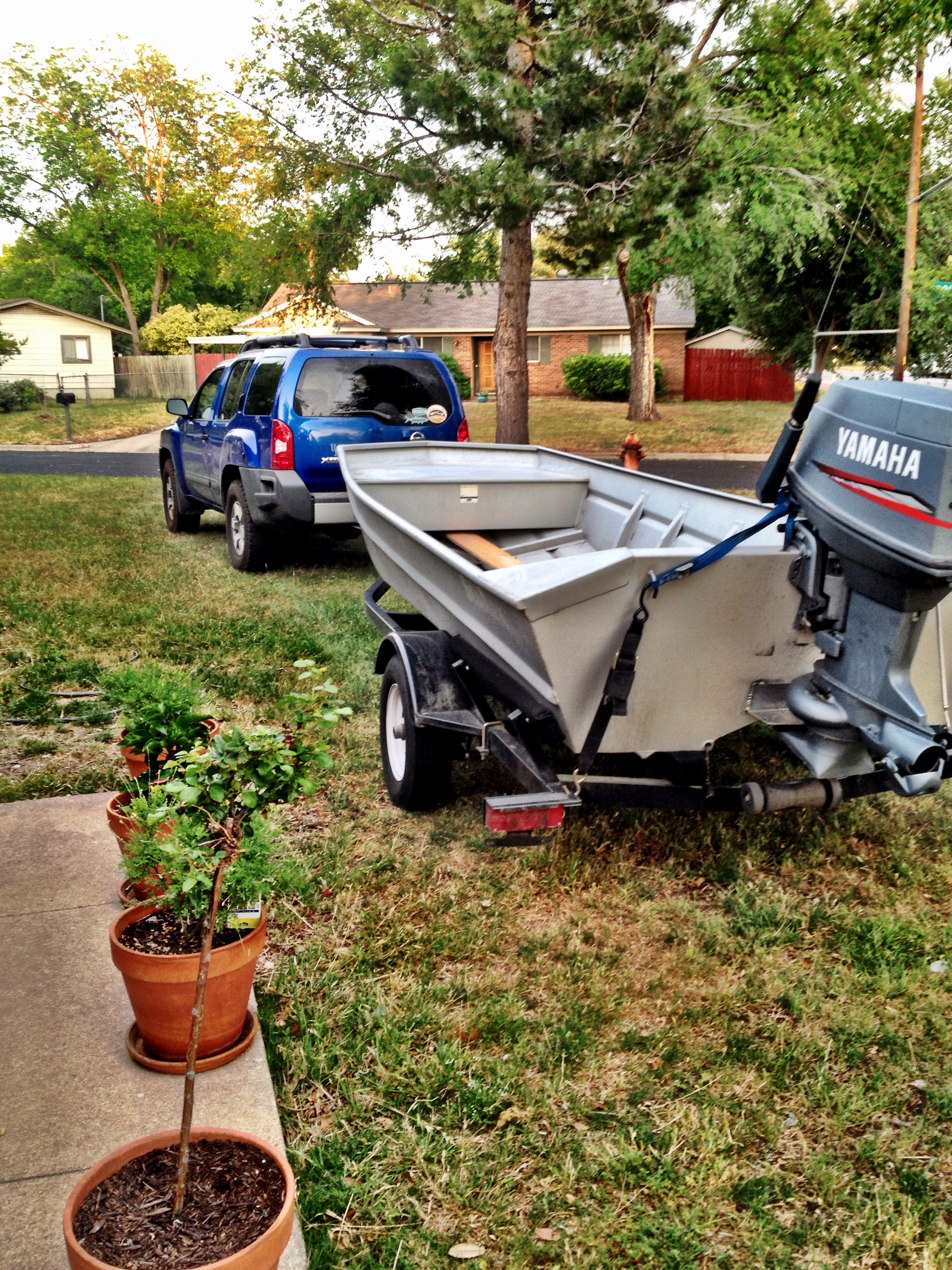
Freddy and the gang were worth every minute of the drive and their knowledge of lower-unit-less engines and boats is beyond awesome. I look forward to my return for a new engine.
Like I said in the previous post, I was going to do the exact same thing to this boat that I had done to the blue one. The SeaArk had a slight V in the Hull and I decided that needed to be addressed first. I had 4”x 4” 90 degree angle aluminium welded into the ribs to create a flat surface to build the flooring on. The flooring was Cedar planks that I sanded, epoxied, sanded, epoxied, sanded, epoxied and then sanded one more time with a final coat of spar varnish for the UV protection. I love wooden boats. My grandfather used to build them. I couldn’t not have the wood floors again, however, they are a huge pain in the ass to fit. I’m a huge fan of brute force and ignorance and in my diving days solved many problems with the idea that if a hammer wasn’t working a bigger one would. Fortunately, I was able to use the same tools my grandfather had used in his boat building; unfortunately his knowledge and experience did not magically pass through the tools as I had hoped it would. He died many years ago and I thought of him a lot while using them mostly during my many moments of frustration in not being able to beat the wood into submission with a larger hammer. The floors look great, however I can see every moment of frustration when my patience (or lack thereof) got the better of me. Guests don’t seem to mind.






Supervision a year later...
Once the side pieces were cut and fitted to the ribs of the boat the rest went pretty quickly. I also can’t help but to think of my daughter, Poppy, who supervised the last boat, she was only a few months old and was pretty easy to occupy. She’s now almost 2 and has ZERO ability to sit and keep my company.
So that’s the floors. I was, at first, going to do lean bars and knee braces however after the first couple trips I’ve found out they aren’t really needed. It’s my opinion that maybe they create a false since of security for the anglers and without them my clients seem to have a better awareness of themselves and their movements while in the boat as long as I communicate my intentions while on the oars which is better for a lot of reasons. Speaking of the oars, I also didn’t have to create the “frame” like I had before. Oar locks u-bolt directly to the gunwales, which I need to move about a foot forward (boat forward) to give the front guy a little more room.
I, of course, have a laundry list of things to do still with rod holders being the first and some sea deck type stuff for the front casting platform (it gets hot) but since the boat was new there was no need to paint and do all that other nonsense that kept me so busy on the last project. Having the blue boat in my past made doing this boat so much easier, mainly because it was new…
Please contact me with any questions that I most likely did not answer. Alvin, JD and I would be more than happy to share what we’ve learned. We all run different rigs each having their own pros and cons.
Enjoy,
AWG
The Perfect Fly Rod For Central Texas Rivers
The short answer would be a 9 foot 6 weight. But who needs a short answer when we are talking about fly rods, and everyone knows there is no way to cover all your bases with just one rod. So let's dig a little deeper and figure out what fly rod would cover the most water for the average Central Texas angler.
The 9 foot 6 weight rod would be my first choice for a few reasons. I fish for bass on the Colorado River more than any other local water, and a 6 weight rod allows me to cast larger poppers and streamers that are sometimes required to to catch the larger Colorado River bass. The same rod would work well for nymphing on the Guadalupe River. The 9 foot length is perfect for mending and a 6 weight will make it easy to cast the multi-fly strike indicator set ups.
If I had to chose another rod it would be an 8.5 or 9 foot 5 weight. The 5 may be a better choice if I spent more time on the Llano River or the San Marcos River. A 5 weight rod will be lighter and the 8.5 foot length will make it a little easier to cast in tight situations. In the next post I will discuss the most appropriate rods on a river by river basis.


